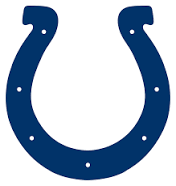Arizona Cardinals
- Paul Grange

- Sep 23
- 3 min read

The Arizona Cardinals carry a name older than almost any other in professional football. The story begins in 1898, when a Chicago athletic club first fielded a team that would eventually become today’s Cardinals. In 1901, team founder Chris O’Brien bought used jerseys from the University of Chicago. They were faded red, and when someone called them “maroon,” O’Brien snapped back that they were “not maroon — they’re cardinal red.” From that moment, the name Cardinals stuck. Cardinal red, a deep, vivid shade between crimson and scarlet, became the club’s trademark.
The name also carried a natural resonance. The northern cardinal bird, common across much of the U.S., is known for its brilliant red plumage and distinctive crest. Choosing “Cardinals” gave the team not just a colour but a living emblem: a small bird with a fierce voice, singing proudly even in winter.
The franchise is the oldest continuously run professional football team in the United States. They began in Chicago, moved to St. Louis in 1960, and finally settled in Arizona in 1988. Each move brought new fans but also kept the same name, making “Cardinals” a rare thread of continuity in a league defined by change.
Through much of that journey, the team has been tied to the Bidwill family, who bought in during the 1930s and still own the franchise today. The fortune that allowed Charles Bidwill to buy the team in 1932 came from a mix of law, business, and the rough edges of Chicago’s Prohibition era. Bidwill was a successful lawyer with deep ties to the city’s political machine, and he invested in enterprises linked to bootlegging and gambling. He and the family also ran Sportsman’s Park racetrack in Cicero, a major horse-racing venue that generated huge profits. That mix of legal practice, racing, and Chicago’s underworld fortunes gave the Bidwills both the money and connections to hold on to the Cardinals through decades of struggle. Today, their wealth is tied to the Cardinals themselves, now worth billions, with Bill Bidwill’s son Michael Bidwill running the team as president.
Today, the Cardinals play in Glendale, part of the sprawling Phoenix metro area. Their home, State Farm Stadium, is famous for its retractable roof and its natural-grass field that rolls outside to bask in the desert sun. Glendale itself was once farmland, but has grown into a centre for sports and entertainment, hosting Super Bowls, concerts, and the Fiesta Bowl. The wider Phoenix valley is one of America’s fastest-growing regions, driven by real estate, technology, healthcare, defence, and tourism. From retirees to tech workers, waves of newcomers have helped transform the desert into one of the country’s most dynamic metro areas.
Long before freeways and stadiums, however, this land was home to Native American peoples whose legacy still shapes Arizona. The Hohokam built complex canal systems in the Phoenix basin over a thousand years ago, engineering irrigation networks that modern Arizona still builds upon. To the north, the Navajo (Diné) and Hopi maintain cultural traditions tied to the land and sky. The Apache, Tohono O’odham, and many other tribes also lived across Arizona, adapting to the harsh desert environment with resilience and ingenuity. Today, more than 20 federally recognised tribes are based in Arizona, their reservations covering nearly a quarter of the state. Their history of survival in the desert mirrors the toughness of the place the Cardinals now call home.
On the field, the Cardinals’ story is one of frustration punctuated by flashes of brilliance. They won two NFL Championships in Chicago, in 1925 and 1947. The St. Louis years saw stars like Dan Dierdorf and Jim Hart but little postseason success. In Arizona, they’ve had moments of glory — none brighter than the 2008 season, when quarterback Kurt Warner and receiver Larry Fitzgerald carried the team to Super Bowl XLIII. Fitzgerald’s postseason was one of the greatest ever, capped by his late touchdown sprint against the Steelers in the Super Bowl, a play still etched into football memory despite the narrow defeat.
The modern Cardinals are also inseparable from the story of Pat Tillman. A hard-hitting safety who became a fan favourite for his intensity and intelligence, Tillman made the extraordinary decision to leave the NFL after the 2001 season and enlist in the U.S. Army following the 9/11 attacks. He served tours in Iraq and Afghanistan before being killed in action in 2004. His sacrifice turned him into a symbol far bigger than sport — a reminder of courage, conviction, and the costs of service. The Cardinals honour him with a statue outside State Farm Stadium, and his number 40 remains retired. Tillman’s legacy binds the franchise to a national moment of grief and respect, and his memory continues to shape how the team is viewed both locally and across the league.
The Cardinals are a century old, a franchise that wore hand-me-down jerseys and turned them into a lasting identity.







Comments